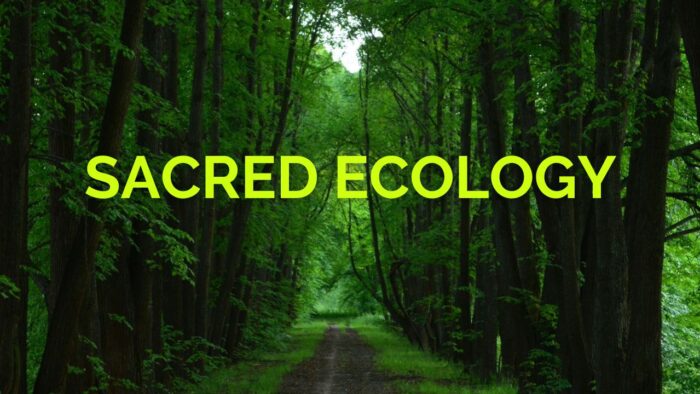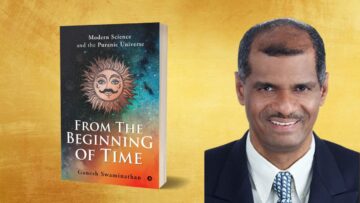Sacred Ecology pertains to the spiritual understanding and reverence for the environment and nature. In many indigenous cultures, there’s a belief that the natural world is imbued with spiritual significance. Sacred ecology emphasises the interconnectedness of all living beings and the environment, advocating for stewardship and sustainable coexistence with nature. INDICA has organised seven sessions so far on Sacred Ecology in a series on Sacred Ecology.
The early Indian religious texts – Vedas, Upanishads, Arayanyakas, Epics, Puranas and the entire classical Sanskrit literature are the basis of our understanding of the conservation, preservation and management of forests of ancient India. Ancient Indian texts like the Arthasastra, Sathapatha Bhramana, Manusmrti, Brhat-Samhita, Ramayana, Mahabharatam and Rajtarangini mirrored the ideas of forest ecology and conservation.
Professor Rana PB Singh in an article for INDICA, says for India, where there is a long history of deep faith in human psychic development, which is still accessed through sacred performances, Sacred Ecology is a fundamental truth. It is not identical, but very close, to deep ecology and ecospirituality. When an order of divine manifestation is realised, it turns to sacralisation. Hindu texts describes the Sky as father and the Earth as mother, that is how whole world is a family and we all are brothers and sisters, as said in Mahā Upanishad (6.72): “For those who live magnanimously the entire world constitutes but a family” (Udāracharitānām Vasudhaiva kutuṁbakam), and further elaborated in the Hitopadesha (1.3.71).
The first reference of cosmic evolution is given in the Purushasukta of the Rig Veda (10.129), which is considered to be the earliest description of the mystery of the cosmos:
According to this Suktam
At first there was only darkness wrapped in darkness.
All this was only unilluminated water.
That One which came to be, enclosed in nothing,
arose at last, born of power of heat.
In Sacred Ecology, we’ve explored the essence of Mantras, particularly focusing on their connection to nature. In the Vedic tradition, a Mantra’s Devata, Chandas, and Rishi hold significance. Devata represents the essence of the mantra, often symbolising aspects of nature rather than anthropomorphic figures. Read below about the seven sessions.
Sacred Ecology and Sri Rudram by Dr Jayaraman
The Rudram, specifically the Shri Rudram Chamakam, is a Vedic hymn dedicated to Lord Rudra, a form of Lord Shiva. It’s found in the Krishna Yajurveda and is considered one of the most ancient and revered chants in Hinduism. It mentions the sun, water and land as the visible divine. The aspects of nature that are celebrated are – the various hues of the Sun, hues of flaura and fauna, the various kinds of landscapes and water including flow, sources of water and rivers and banks.
Lessons from the Bhavishya Purana by Shri Jammalamadaka Srinivas
There are four parts (called parvs) in the Bhavishya Puranam. The first two parts refer to sacred ecology. The first part or ‘brahman parv’ revolves around the Sun and symbolically represents it as a god. It explains many facets or dimensions of the characteristics of the sun and also suggests ways to deal with this powerful entity. The second part or the ‘madhyam parv’ deals with creation of the universe. It speaks about environmental-friendly practices giving importance to tree plantation, water conservation & animal care specially the cow. The process of popular ‘stayanarayan katha’ is also described.
Bhu Suktam: Chanting and Commentary by Shantala Sriramaiah and Dr Nagaraj Paturi
A beautiful hymn to mother Earth Bhū Sūktam. Bhū or bhūmi is the globe or earth on which we live. It is a glorious place in the cosmos, for we find the marvel of life here. Combining mantras from the Taittirīya Saṃhitā & Brahmaṇa, this hymn is one of the Pañca (5) Sūktams recited together.
Agni Suktam: Chanting and Commentary by Shantala Sriramaiah and Dr Nagaraj Paturi
The Agni Sukram, a hymn from the Rig Veda, venerates Agni, the Vedic God of creation. This sacred chant invokes the divine energy of Agni, symbolising purity, transformation, and the conduit between humans and the celestial realms. The rhythmic verses, expressed in Sanskrit, resonate with spiritual significance, offering a profound connection to the cosmic forces and fostering a sense of divine harmony.
Ratri Suktam: Chanting and Commentary by Shantala Sriramaiah and Dr Nagaraj Paturi:
From the Ṛgveda, this hymn celebrates Ratri’s association with darkness, depicted as a nurturing aspect, where she provides rest and rejuvenation to all beings. Ratri’s symbolism goes beyond the physical night; she represents the cyclical nature of existence, where darkness precedes light, and rest precedes activity.
Osadha Suktam: Chanting and Commentary byShantala Sriramaiah and Dr Nagaraj Paturi:
Plants are at the center of the Oshadhi Suktam. The word Oshadhi gives the impression that we are talking about medicine but in Sanskritam we have proverbs which say that there is no plant which is not an Oshadhi. The word plant and herbal plant are used interchangeably and in Vedic mantras, including Shanti Mantras, we pray for plants to grow well. In the Bhagavad Gita, Bhagavan Krishna says in the form of Soma Rasa I am nourishing all the plants. This Sukta is about the Botanical world. We are orienting ourselves emotionally towards the green plants. We are talking to plants asking them to nourish us and heal us.
Suryanamaskar Mantras: Chanting and Commentary byShantala Sriramaiah and Dr Nagaraj Paturi:
In the Surya Namaskar mantras, we delve into the profound significance of Surya, or the Sun. During the era when European scholars like Max Mueller were studying the Vedas, Surya mantras received considerable attention. This led some to misconstrue Vedic mantras as solely dedicated to the Sun god, and were termed “Solar Mythology.” However, the essence of these mantras transcends mere anthropomorphism; they depict the Sun as a symbol of vitality and generative power. This ancient understanding of the Sun’s role highlights its vital importance in sustaining ecological balance and fostering life on Earth. It’s a reminder of the deep reverence our ancestors held for the natural world and its interconnectedness with the divine.






